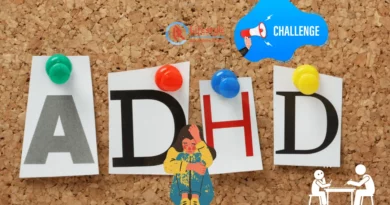Behind Closed Doors: Exposing the Hidden Face of Domestic Abuse
What is Domestic Abuse?
Domestic abuse is a dark reality that often unfolds behind closed doors, leaving victims trapped in a cycle of fear, pain, and silence. It is a distressing issue that affects millions worldwide, transcending boundaries of age, gender, race, and socioeconomic status. This article aims to shed light on the hidden face of domestic abuse, bringing the conversation out of the shadows and providing a glimpse into the harrowing experiences faced by victims.
Gender-based violence or abuse encompasses various forms: physical, sexual, emotional, and psychological. Examples include female genital mutilation, ‘honor’ killings, murder, coerced and early marriages, and sex trafficking. Among these, intimate partner violence (IPV) and non-partner sexual violence (NPSV) are distressingly common, affecting nearly one in three women globally at some point in their lives. This account sheds light on the most recent insights from the 2021 WHO study, offering estimates of global and regional prevalence of intimate partner violence and non-partner sexual violence against women.
The Cycle of Silence and Fear
The cycle of abuse within the walls of a home is a complex web, difficult to unravel. It typically involves three phases: tension building, explosion, and the honeymoon phase. During the tension-building phase, small incidents and tension start to escalate. The explosion phase is marked by intense abuse—physical, emotional, or both. This is followed by the honeymoon phase, where the abuser may show remorse, apologies, and even affection, creating a false sense of hope and normalcy.
Victims often find it hard to escape this cycle due to fear, financial dependence, societal stigma, or love for the abuser. This perpetual cycle keeps them trapped, fostering a culture of silence.
Types of Abuse
Physical Abuse:
Physical abuse is visible, leaving scars and bruises. It includes hitting, slapping, punching, or any act that causes bodily harm. The scars are not just physical; they run deep, affecting the mental and emotional well-being of the victim.
Emotional and Psychological Abuse:
Emotional abuse is often subtler but equally damaging. It includes belittling, threats, manipulation, gaslighting, and isolating the victim from their support system. Over time, this erodes the victim’s self-esteem and confidence.
Financial Abuse:
Controlling finances and economic resources is a form of abuse. Abusers may control the victim’s access to money, monitor spending, or prevent them from working. This financial dependence becomes a tool for perpetuating control.
Sexual Abuse:
Sexual abuse shatters the sanctity of consent, violating a person’s autonomy and boundaries. It involves heinous acts where victims, who should feel safe with their perpetrators, instead face coercion and force. The scars of such trauma run deep, impacting not only the body but also the psyche, leaving lasting emotional and psychological wounds.
Spiritual Abuse:
Those engaging in spiritual abuse may coerce the victim into adhering to the abuser’s religious beliefs and practices, even if they contradict the victim’s own faith. They might also impose a religion upon shared children that the victim does not support.
Stalking:
Stalking involves persistent harassment and threatening actions, such as appearing at the victim’s residence or workplace, sending unwelcome emails, voicemails, or messages via phone or mail, leaving unwanted items, or damaging the victim’s belongings. Typically, it is carried out by individuals already engaged in other types of domestic violence.
The Impact on Victims
The consequences of domestic abuse are profound and enduring. Victims suffer from physical injuries, but the emotional and psychological scars are equally devastating. The constant fear and degradation can lead to depression, anxiety, post-traumatic stress disorder (PTSD), and even suicidal thoughts. We can attempt to comprehend the suffering of a victim, but the true depth of pain is etched in the eyes and heart of someone enduring the torment of abuse.
The effects aren’t limited to the victims alone; they extend to the children who witness or experience the abuse. They grow up in an environment where violence is normalized, which can perpetuate the cycle into the next generation.
Breaking the Silence
Well, silence is the power of any abuser in an abusive relationship so the first step towards combating domestic abuse is breaking the silence. Victims need to know that they are not alone, and help is available. Friends, family, support groups, and helplines can offer the necessary support and guidance to escape the clutches of abuse.
For society, it’s crucial to raise awareness, educate, and advocate for domestic abuse survivors. By eliminating the stigma associated with being a survivor, we can create a safe space for victims to share their stories and seek help without fear or judgment.
Conclusion
Domestic abuse thrives in silence and secrecy. To end this cycle, we must expose it, educate our communities, and support survivors on their journey to healing and empowerment. By uniting against domestic abuse, we can create a world where every home is a haven of safety and love, free from the hidden face of domestic abuse.
Communication is a powerful tool in addressing and overcoming issues like domestic abuse. By fostering open dialogues, sharing experiences, providing support, and raising awareness, we can collectively work towards a society where individuals feel empowered to break the silence, seek help, and create a safer environment for everyone. Together, let’s encourage conversations that lead to healing, understanding, and ultimately, an end to domestic abuse. 💙 #BreakTheSilence #EndDomesticAbuse
Note: Remember, your voice has the power to break the silence and make a difference. Let’s stand together to expose the hidden face of domestic abuse and offer hope to those who need it.
Share your thoughts in the comment below.
Also Read:
From Streets to Cyberspace: Why Women Are Most Targeted More Often
For News related to entertainment visit our entertainment website:
https://www.glamworldtalks.com/



